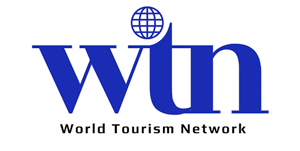According to local tourism businesses at the four-day Vietnam International Travel Mart, which begins on Thursday in Hanoi, Vietnam’s tourism industry is well prepared to welcome more visitors.
However, companies remain cautious in their business outlook due to the uncertainty caused by the absence of key markets and labour shortages.
According to the Vietnam National Administration of Tourism, domestic tourism in Vietnam increased by 168.3 percent last year, serving 101.3 million locals, exceeding a stated objective and the previous peak of 85 million in pre-pandemic 2019.
According to tour companies, the COVID-19 epidemic has caused Vietnamese tourists to turn inwards.
However, the epidemic has had an influence on travel preferences since local tourists want to stay safe. They are travelling in smaller groups and to destinations closer to home, Ly Truong Xuan, marketing manager of Hanoi-based Vietnam tourism told a news agency.
He was concerned about a fourfold increase in COVID-19 instances during the last week, with the capital of Hanoi having the highest cases.
Furthermore, the marketing executive stated that rising transportation costs, particularly airfares, would cause domestic visitors to reconsider planning trips.
Vietnam is set to hike domestic airline rate ceilings by an average of 3.75 percent in the second half of this year, after the Civil Aviation Administration stated that rising fuel prices, among other expenditures, have been eroding local carriers’ profitability.
Despite a cautious outlook, the domestic tourism business has returned significantly, according to official figures, with total sales at shops and service revenues in the first three months exceeding a 12.6 percent annual increase in the same time in pre-pandemic 2019.
Restaurant and lodging sales totalled 6.84 billion US dollars from January to March, up 28.4 percent from the same time last year, while tourism income more than doubled to over 289 million dollars, according to the General Statistics Office.
In terms of the worldwide market, 2022 saw some growth compared to the difficult years of the pandemic, but the results failed to meet the aim or match pre-pandemic levels.
According to the General Statistics Office, tourism in Vietnam peaked in 2019, with the country welcoming 18 million foreign visitors and generating more than $30.2 billion USD.
Then came COVID-19, which reduced the number of foreign tourists to 3.8 million in 2020, then to 157,300 in 2021.
Despite being one of the first Southeast Asian countries to fully reopen its doors to international tourists, the Southeast Asian country welcomed over 3.7 million arrivals last year, around 20% of pre-pandemic levels.
However, after experiencing weak growth from important markets, particularly China, Vietnam’s tourism rebound is likely to accelerate significantly.
“We have prepared to roll out several packages to entice visitors, but the number of Chinese visitors booking experiences in Vietnam is still lower than the corresponding period prior to the pandemic,” said the marketing executive with Vietnam tourism.
Chinese visitors account for a large proportion of total arrivals in Vietnam, and their larger purchasing power benefits the areas they choose to visit, according to him.
As Chinese visitors return in increasing numbers, they will play an important part in the tourism industry’s recovery, according to Duong Thanh Phuong, chief executive of the 5-star Annova Hotel in Vietnam’s south-central province of KhanhHoa.
According to the Department of Tourism, KhanhHoa, one of the country’s most popular tourist sites, welcomed almost 2.5 million Chinese tourists in 2019, accounting for more than 70% of the coastal province’s international arrivals.
Prior to the epidemic, China was clearly the largest source of visitor arrivals in Nha Trang, KhanhHoa province, according to Phuong.
The allure of beaches, along with the accessibility of direct flights, vast hotel and luxury resort lodging capacity, and high-quality services, drew a rising number of Chinese tourists to the region, he noted.
At the annual Vietnam International Travel Mart, local tourism firms stated they welcomed the chances presented by Chinese travellers in order to position themselves for long-term growth in the increasingly competitive travel market.
As the world’s largest tourism market, China will take some time to recover to full capacity, according to the hotel CEO, who expects a full recovery from Chinese travellers by the end of this year.
As the Southeast Asian country prepares to welcome more tourists, with a target of 8 million foreign arrivals and approximately 27 billion US dollars in revenue this year, tourism operators are struggling to find enough workers, particularly highly skilled workers, to meet the expected demand.
According to the International Labour Organisation, Vietnam’s tourism sector is among the worst-affected in the world, accounting for about one-third of all employment losses in the country.
During the pandemic, airlines, tour operators, hotels, and restaurants laid off employees who then decided to leave the industry for good, according to the National Administration of Tourism, which also stated that 44 percent of workers with 5-10 years of experience and 90 percent of those with graduate degrees moved to less affected areas.
Companies had limited opportunity to ramp up capacity after the outbreak before a rush of interest from both domestic and foreign markets.It has been a struggle for companies to recruit the staff back and re-train them, said Annova Hotel’s chief executive.
“This will take time, and it is not the problem that can be solved in one or two months,” he stressed but hoped that thing would be back to normal by the end of this year.
Due to staff shortages, owners of hotels, bars, restaurants, and travel agencies in Vietnam are being forced to provide greater compensation for full-time workers responsible for several duties, hire more seasonal semi-qualified or unqualified workers, and curtail services, according to local media.
It necessitates the hiring of full-time devoted employees rather than part-time simple positions, with a focus on training to equip them with field experience, because service quality is critical to the industry’s long-term growth in order to attract high-spending and long-stay visitors, according to the hotel CEO.
- TAGS / KEYWORDS:





.png)


















.jpg)




.png)











